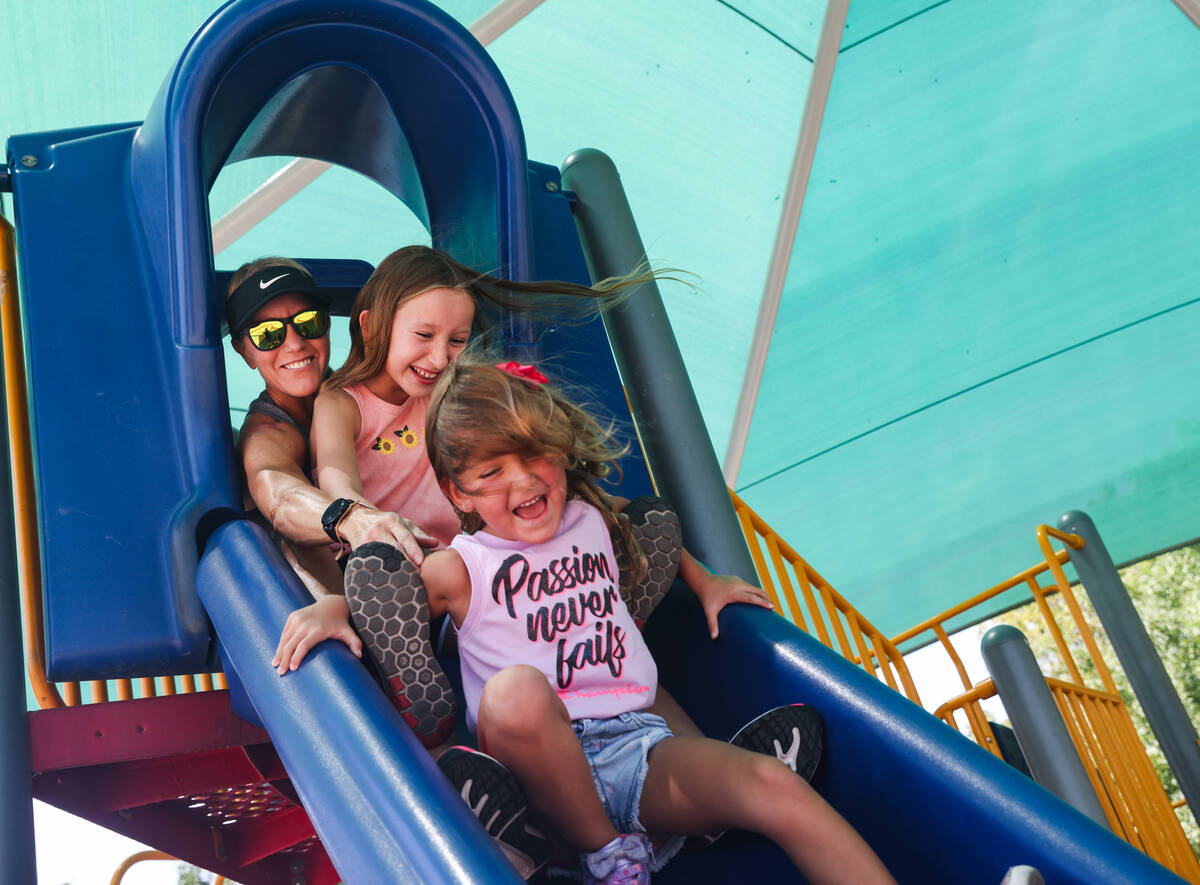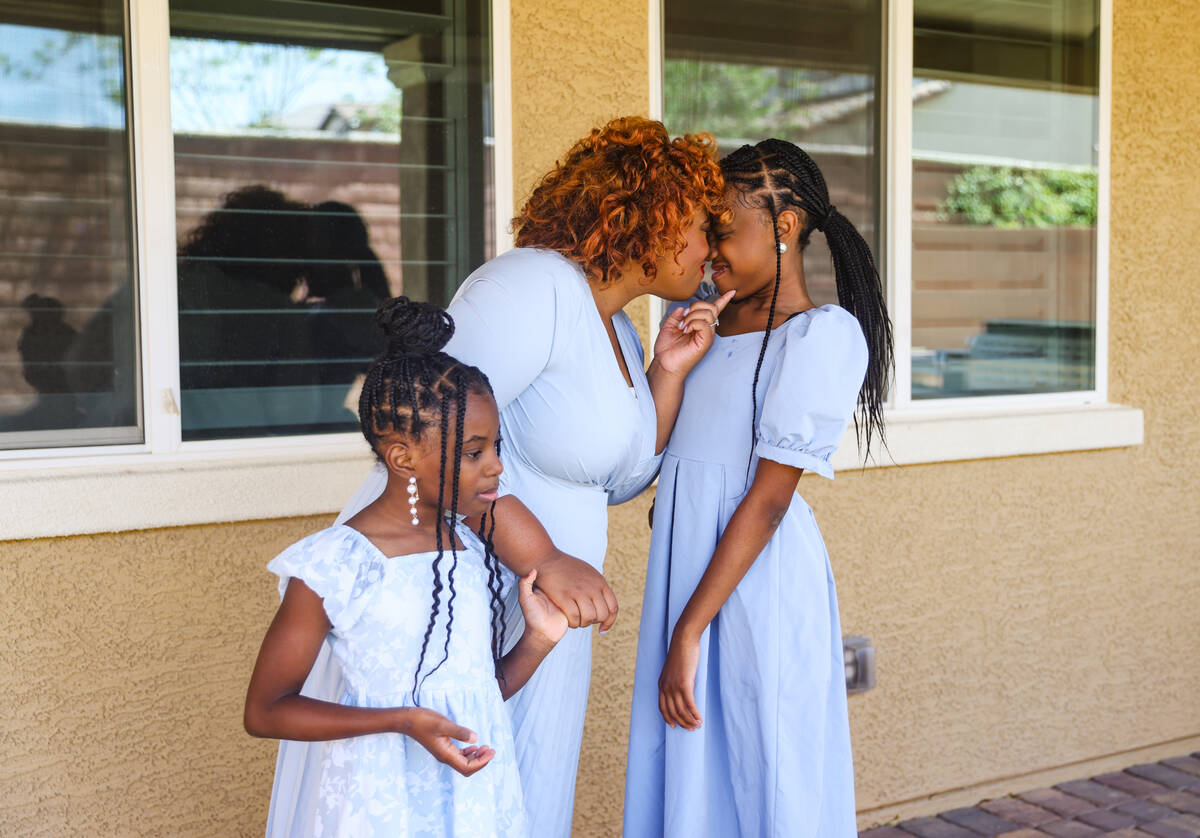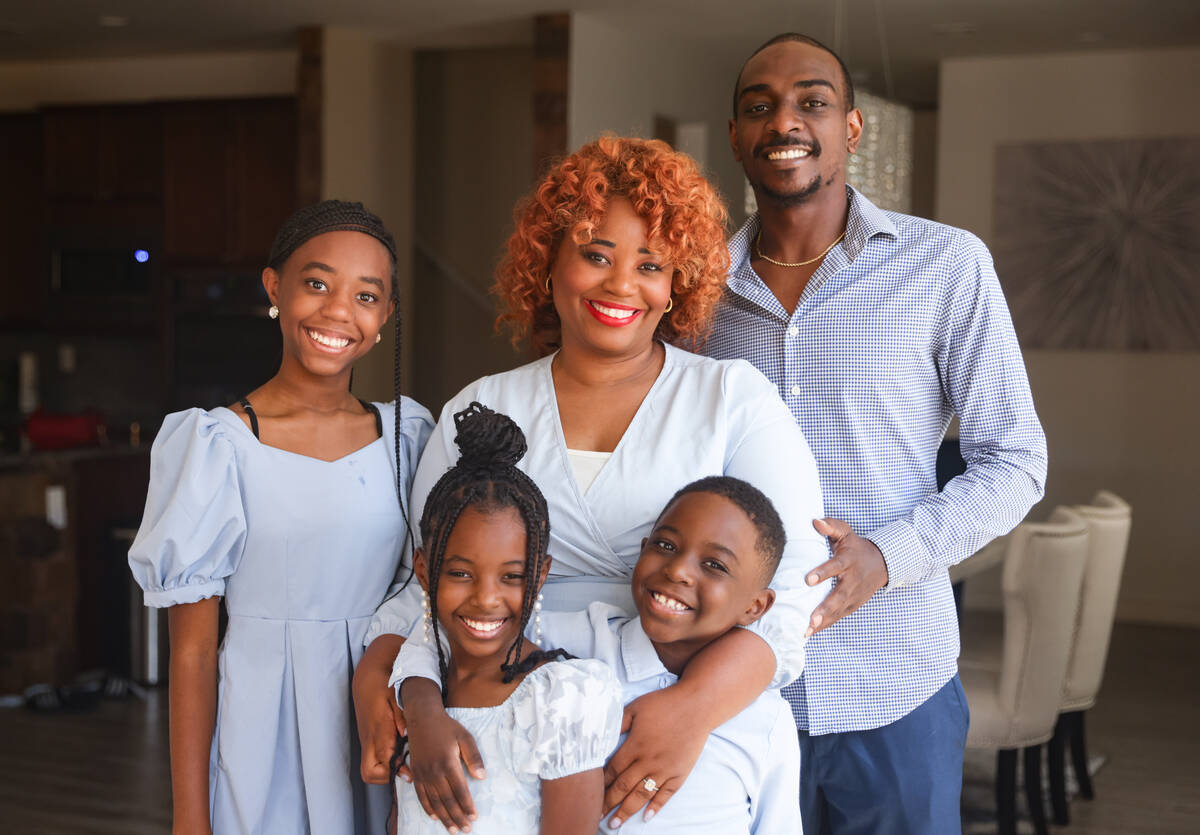‘Never in a million years’: Medical condition struck 2 seemingly healthy Las Vegans
It came upon Rosemary Wade suddenly and without warning, but with an increasingly scary realization that something was wrong.
It was the same for Kim Benitez, who thought her passion for running and young age would protect her from what she was experiencing that night.
Both Las Vegas women suffered strokes in their mid-30s — despite having no family history of stroke and being seemingly healthy with no previous symptoms.
While people tend to associate stroke mainly with older men, experts say that it’s a leading cause of death among women.
While Wade and Benitez have largely recovered, they have taken it upon themselves to share their stories to educate other women about how unexpected, and dangerous, strokes can be.
A dangerous condition
A stroke occurs when blood flow to the brain is interrupted, depriving brain tissue of oxygen.
Most common are ischemic strokes, usually caused by a blood clot interrupting flow in a blood vessel, says Dr. David Eng, medical director of Encompass Health Rehabilitation Hospital of Desert Canyon.
Next most common are hemorrhagic strokes, in which a blood vessel in the brain bursts and causes bleeding.
About 1 in 5 women ages 55 to 75 will have a stroke, according to the Centers for Disease Control and Prevention, and women are more likely than men to suffer strokes at younger ages.
The CDC identifies hypertension, or high blood pressure, as the main risk factor of stroke. Others include diabetes, high cholesterol, obesity, smoking, migraines, and the use of oral contraceptives or hormone replacement therapy, according to Eng.
The CDC notes that African American and Hispanic women are at higher risk of stroke.
Like a heart attack, a stroke is a cardiovascular condition. It’s sometimes referred to as a “brain attack,” because a clot or blockage affects the brain just as a clot or blockage might prevent blood flow to the heart.
Lifestyle modifications used to address heart attack risk factors also can help prevent strokes. Among them are controlling high blood pressure, cholesterol and blood sugar, eating a heart-healthy diet, maintaining a healthy weight, avoiding smoking and getting regular exercise, Eng says.
‘A very healthy person’
Wade never pictured herself as someone who would suffer a stroke.
“Never in a million years” she says. “I was a very healthy person, relatively. I have never been hospitalized.”
Her mother did have a heart problem and died a few years ago. But Wade thought her young age would help insulate her from having a stroke.
She was just 34 years old on Aug. 26, 2023, when she found out that it didn’t.
Looking back, Wade sees that “there were a lot of stresses in my life” that played a part in her stroke. Her business as a caterer kept her busy. The morning before her stroke, she drove a friend to the airport who was headed to Los Angeles for a heart transplant.
Going to bed that night she noticed a “weird” headache in the middle of her head. But she chalked it up to stress.
Waking up a few hours later, Wade noticed the right side of her face swelling. She was also limping and her face drooped when she smiled.
Yet she was “still in denial.”
Thinking it was an allergic reaction, she asked her husband to take her to the ER. There, she recalls, a doctor told her to squeeze his fingers. She couldn’t.
Wade was admitted and immediately given clot-busting drugs that, because their potency, “kept me in bed 24 hours,” she says.
Only when she could stand did it “finally hit me that I had a stroke.”
Wade began a course of intense physical therapy and rehab that lasted for two weeks in the hospital and a rehab facility and months at home. She returned to her job but used a cane or walker for a while afterward.
Today, the 35-year-old Wade says she feels better and has no noticeable after-effects.
‘Last thing on my mind’
Kim Benitez also thought the idea of having a stroke was “crazy.”
“I was heavily into exercising,” says Benitez, who ran 5 miles on the day before her stroke. She was 35 and had no risk factors other than using oral contraceptives.
A stroke was “the last thing on my mind,” she says.
She went to bed that night as usual. About 3 a.m., as her 18-month-old daughter and husband slept, she got up to use the bathroom and found that she couldn’t get there.
She felt as though she were veering to one side. Her vision was askew and she felt “foggy.”
Her husband, Peter, hearing her stumble about, awakened and asked Benitez what was wrong. He led her to the bathroom and noticed her slurred speech and how the left side of her face was drooping.
She had no feeling on the left side of her body. “It was the scariest moment of my life,” she says.
Her husband recognized the symptoms of a stroke and called 911. At the hospital, it was determined that “a blood clot went to the right side of my brain and affected the left side of my body,” Benitez says.
Anticlotting medications were begun immediately and therapy began soon after. Benitez underwent months of physical, occupational and speech therapy.
“Slowly but surely things started coming back,” says Benitez, who found inspiration during her intense recovery from her daughter.
“My 18-month-old daughter needed her mom,” she says. “I was a stay-at-home mom.”
Since then, Benitez, now 44, has had another daughter. But, because of the stroke, her pregnancy was considered high-risk, prompting her and her husband to delay it for more than four years.
Sharing their stories
It’s likely that quickly seeking medical care was key to both women’s recoveries.
With a stroke, starting treatment immediately can greatly improve outcomes, Eng says.
Treatment focuses on restoring blood flow to the brain as quickly as possible and preventing brain cells from dying. Some clot-busting medications must be administered within three hours to minimize damage that can cause paralysis, speech or other long-lasting issues.
After that, treatment focuses largely on rehabilitation of skills that were affected and addressing risk factors.
Wade and Benitez now are feeling well. Both serve as American Heart Association volunteers, hoping their stories can help other women understand the risk factors and the warning signs of stroke.
Benitez figures she’s “99.9 percent” recovered. While her left arm has full mobility, she says that she cannot feel whether water is hot or cold. “But I’ve learned to live with it.”
“I get tired a lot easier,” Wade says. “There are times I have to sit down.”
She also notices occasional memory slips but says, “I feel I’m 90 percent back.”
“I feel very well,” Wade adds. “I feel very blessed to be here.”
Remember FAST
The mnemonic device FAST is often used to help people remember the symptoms of stroke:
* F for face: Does one side of the face droop when smiling?
* A for arms: Does one arm drift downward when both arms are raised?
* S for speech: Is speech slurred or strange when repeating a simple phrase?
* T for Time: Call 911 immediately if any signs are seen.
Immediate medical aid can increase the chance of effective treatment.




























